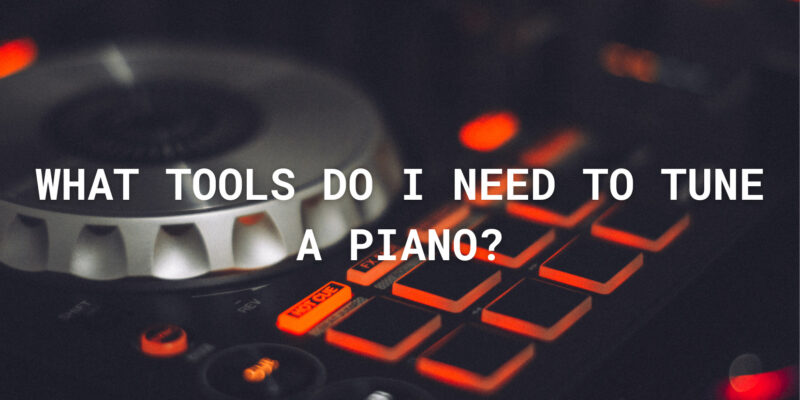Tuning a piano is a skillful and delicate art that requires precision and patience. Whether you’re a professional piano tuner or an enthusiast looking to maintain your instrument, having the right tools is essential. In this article, we will explore the essential tools you need to successfully tune a piano and ensure it produces beautiful and harmonious music.
- Tuning Lever
The tuning lever, also known as a tuning wrench or hammer, is the most critical tool for piano tuning. It’s a T-shaped tool with a socket on one end that fits over the piano’s tuning pins. The lever allows you to adjust the tension of the piano strings by turning the tuning pins.
- Mute Kit
A mute kit is used to dampen the sound of the strings adjacent to the one you are tuning. This helps you isolate the specific string you’re working on and ensures that you hear only the note you want to tune. A typical mute kit includes rubber mutes and felt wedges.
- Tuning Fork or Electronic Tuner
To set a reference pitch, you can use either a tuning fork or an electronic tuner. Tuning forks emit a pure, stable tone, usually at the A4 frequency of 440 Hz, which serves as a reference point for tuning the rest of the piano. Electronic tuners are also widely used, providing digital accuracy and ease of use.
- Stringing Tools
Stringing tools include a set of pliers or wire cutters for adjusting the length of the piano strings. You may also need a string lifter to help raise and position strings during the tuning process.
- Tuning Mutes
Tuning mutes are small rubber or felt mutes designed to temporarily mute individual strings while you tune others. These mutes help you isolate specific strings and fine-tune them without interference from neighboring strings.
- Tuning Fork Holder or Stand
If you opt for a tuning fork as your reference pitch source, you’ll need a tuning fork holder or stand to keep the fork steady while you work. This ensures a consistent reference pitch.
- Tuning Hammer Head Inserts
Tuning hammer head inserts are small attachments that fit over the end of your tuning lever. These inserts come in various shapes and sizes to match different types of tuning pins. Having a selection of inserts ensures you can tackle various pianos effectively.
- Tuning Lever Extension
In some cases, you may need a tuning lever extension to reach tuning pins that are deep within the piano, especially on grand pianos. This extension provides the necessary length to access these pins.
- Notebook and Pencil
Keeping a notebook and pencil handy is essential for jotting down your tuning notes and adjustments. This record helps you maintain consistency and reference your previous tunings.
- Cleaning Supplies
While not directly related to tuning, keeping the piano clean is crucial for its overall maintenance. Soft brushes, cleaning cloths, and piano cleaning solutions are handy tools to have on hand.
Conclusion
Tuning a piano is a meticulous process that requires the right tools and expertise. Whether you’re a professional tuner or a dedicated piano owner, investing in high-quality tuning tools is essential for maintaining the instrument’s sound quality and longevity. With the proper tools and practice, you can ensure that your piano continues to produce beautiful and harmonious music for years to come.

